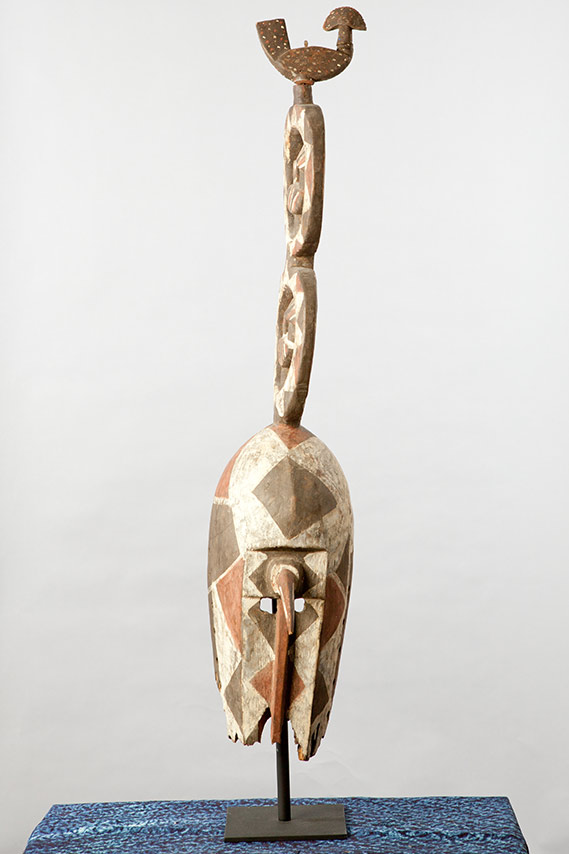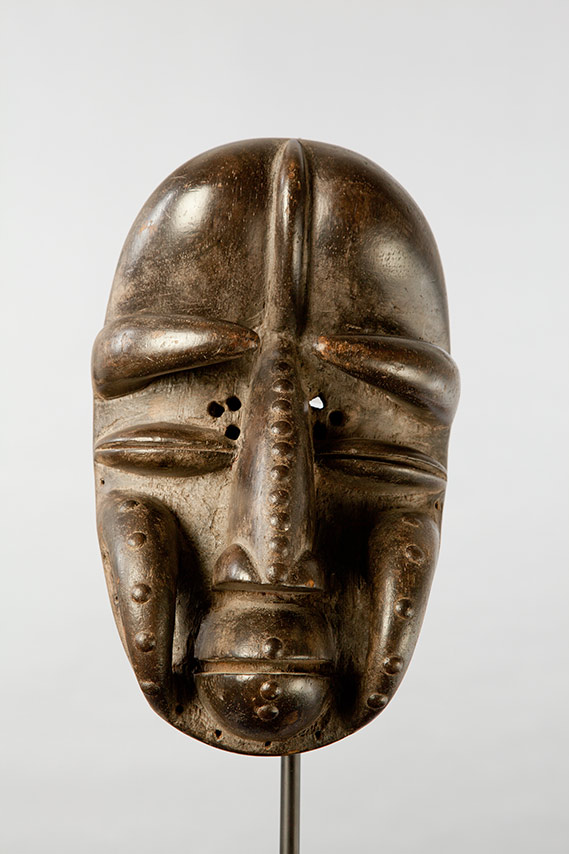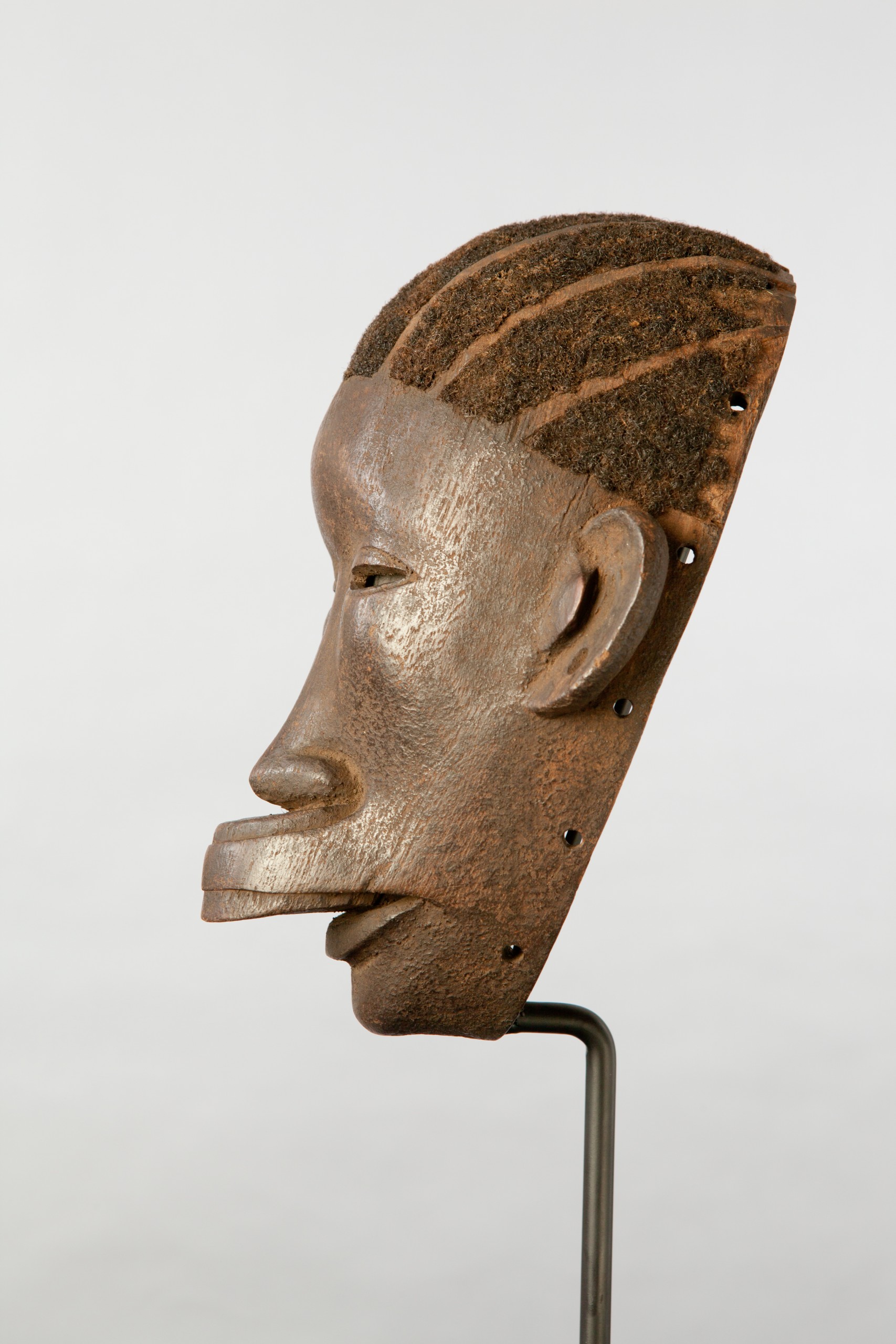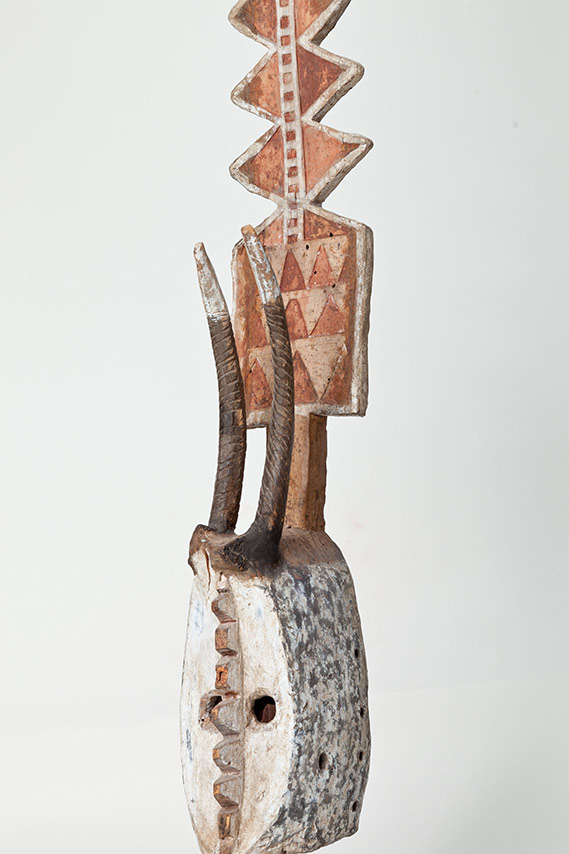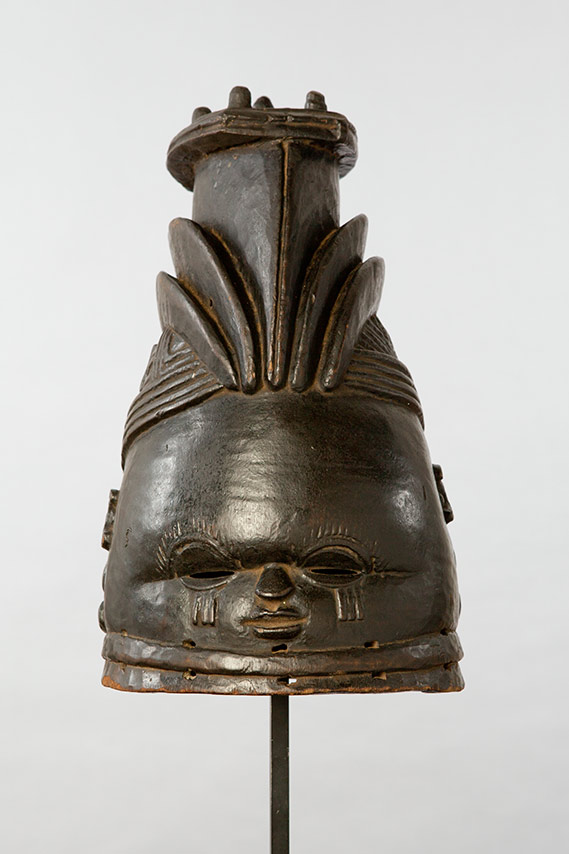Masks
There are all kinds of masks, from a baseball catcher’s mask or hockey goalkeeper’s mask, to Darth Vader’s mask, or Kyogen masks used in Japanese Noh Theatre drama, or a simple Halloween mask. They can range from scary and grotesque to whimsical and silly. Masks have been found in nearly every region of the world, from ancient times to the present. They are used to transform the wearer into someone or something different. This can be into anything—another human being or an animal, or a spirit or a deity. But a mask does not stand alone in a glass case or on a pedestal. In fact, seeing a mask in a museum is quite the opposite of its original intent, since a mask is meant to be worn in a ritualized performance, called a masquerade, which, of course, to be truly relevant needs an audience—people to see and observe it.
When a mask is worn with its accompanying costume in a ritual, the event is called a masquerade. It is through such ritualized performances that mask wearers are said to change, to travel to another world, to appease a spirit, to tell a story or to deliver a message.
In an African community, the appearance of a mask or masks heralds an important social event. Typically, the wearers are concealed by an assortment of clothing and accessories, and accompanied by a variety of festive musical sound. This music can include drumming and clapping as well as singing and dancing. In this way, masks are also able to entertain and/or instruct, and because the masked performer is concealed, he or she is free to point out those who have violated or strayed from community values. Thus they are able to encourage proper behavior.
Whether a mask appears alone or as part of a group of similar or different masks is a matter of cultural context. By exploring the cultural contexts of these masks, much can be learned about how a society views itself in the world, and what it considers beautiful or ugly, foolish or funny, and valuable to preserve; use the <learn more> links with each object to explore these different contexts.
While men have dominated masking practices, including playing the role of women, there are exceptions, and we are fortunate the PLU Collection includes Sowei masks, a rare example of a masquerade performed by women. By investigating the wide range of masks in the PLU Collection, the richness of forms, uniqueness of styles, and the skills and inventiveness of unknown artists from across a range of countries and geographical regions will soon become apparent.



